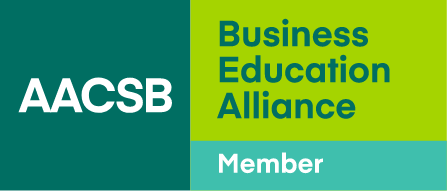Can Learning Agility Be Taught in Business Schools?
Business leaders tell me it is what they are looking for when identifying high-potential leaders. The concept frequently enters my conversations when talking about international management capabilities. And it is something that entrepreneurs can’t live without. It’s called learning agility and, strangely, the term almost never comes up in my conversations with business educators around the world.
Learning agility is the capacity for rapid learning to address new and unfamiliar situations and problems. Some people describe it as “knowing what to do when you don’t know what to do” and, as such, it is a skill perfectly adapted for today’s complex, dynamic, and ambiguous business environment. It requires openness, continuous reflection, and a willingness to take risks and make mistakes. It is about resilience and about adaptability, as it may necessitate “unlearning” things when innovative solutions are needed. Because it helps us apply something we learned in one experience in a completely different context, learning agility is especially useful for managing in a global context.
While many educators claim that students are “learning to learn” in universities, in my experience they are talking about instilling the desire to learn—to seek knowledge and maintain curiosity over a lifetime, applying the scientific method, and thinking like a researcher. As if learning is an academic skill rather than a leadership skill.
Skeptics see learning agility as an inherent trait; something that can’t be learned. I believe that we all have the ability to develop, even master, any skill if we are purposeful about it. Still, I doubt anyone knows yet how to teach learning agility effectively. That’s why I believe it is a huge opportunity for business schools. By demonstrating that learning agility is taught successfully in their programs, business schools will improve career outcomes, increase social impact, and significantly strengthen their position at the intersection of academia and management practice. There are, however, at least three major challenges.
- We must leave behind the toolbox metaphor. The basic idea behind the metaphor is that business graduates have learned a set of tools that can be used to solve business problems they will encounter throughout their career. Unfortunately, the metaphor is now inconsistent with the realities of business and management practice, specifically the rapid pace of change, the relentless demand for innovation, and the complex and multidisciplinary nature of problems. We have not yet developed the tools for solving the most important problems of tomorrow. Our graduates will have to build their own tools, drawing on a wide range of knowledge and experiences. As Roger Martin, the former dean at the Rotman School of Management says, business now needs “model makers rather than model takers.”
- We must insert more learning into experiential learning activities. Doing so means embedding more opportunities for reflection and coaching. It means elevating risk, allowing failure and its consequences to have a larger role in experiential projects. It means more thoughtfully connecting practical experiences with academic content. As hubs of lifelong learning, I believe business schools can help graduates tie together and find more meaning from the wide range of experiences—not just the academic ones—they will have.
- Our faculties must become better facilitators of learning. Most of our teachers are content experts and providers, relaying theories and concepts to students through various channels. Instead, we must focus more on designing learning experiences that enable students to explore and discover, frame and reframe problems, and combine ideas and perspectives in new and innovative ways to develop solutions. As facilitators of learning, our faculties will be more capable of helping students maximize learning from classroom discussion and work experiences and extrapolate new ideas to navigate unfamiliar situations. As McGill professor Henry Mintzberg says, classroom teaching ought to be at least 50 percent experience-based, enabling students to learn more from each other, while the vast majority of current business school teaching is “evidence-based,” positioning the professor as the “sage on the stage.”
Overcoming these three challenges will not be easy. It will require us to be more purposeful about cultivating new mindsets, pedagogical innovation, and faculty development. But can we afford to not try? Either business schools will put themselves in a better position to serve business and meet the rising demand for agile learners, or we will leave the opportunity for consulting companies to exploit.






